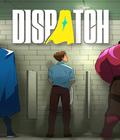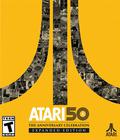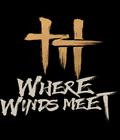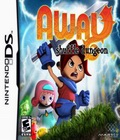Genre: Role-Playing Game
Publisher: Majesco
Developer: Mistwalker
Release Date: October 30, 2008
Away: Shuffle Dungeon places you in the shoes of the aptly named RPG hero, Sword. He's sort of a generic hero, who washed up on the shores of Webb Village after a shipwreck not long ago and has been living there ever since. Webb Village is a common small village, except for one thing: Once every year, a mysterious light called the Away appears and kidnap one villager, who is never heard from again. This has been occurring for the past 99 years. The 100th year is almost over when Sword is almost kidnapped, but a last-minute intervention saves him … at the cost of everyone else in the village. Now Sword must find a way to rescue the kidnapped villagers from the Away and figure out the source of the kidnappings. His only hint are mysterious glowing portals that have sprung up around the village, which lead to mysterious dungeons filled with monsters ….
So, all of the plot I just mentioned? Forget it. Nothing comes of it, and in some cases, it is an outright lie. Roughly midway through the game, a massive plot twist occurs, from which point the game becomes more and more incoherent, introducing silly twist after silly twist that render the plot incoherent at best and stupid at worst. It wouldn't be so bad if the game didn't spend so much time on the plot, but for every period you're in the dungeon, there are increasingly longer periods when you're just sitting around waiting for the plot to advance so you can go to a new dungeon. Any attachment to the characters becomes pointless. This is really a case of a game that tried to have too much plot and is actually worse off for it. The entire game feels like it's focused on trying to build up to the aforementioned twist, with no thought put into whether anything makes sense.
Away: Shuffle Dungeon's major gimmick are the shuffling dungeons. You see, once you enter one of the portals scattered around the village, you'll be taken into a dungeon, which is made up of two parts that are shown on the top and bottom screens of your DS. You can travel between these two parts at will, but the trick is that these parts don't stay still. A timer on the top of the screen counts down the time is before one of the screens "shuffles," changing into a new form. If you're caught on a screen when it's shuffling, you're brought back to the beginning of the level, and if you've found any villagers within the dungeon, they'll be sent all the way back to the bottom, forcing you to redo the entire dungeon again to rescue them. Each time a shuffle occurs, you find a new area to enter. These areas are pre-generated, and indeed, even if something shuffles off-screen, the actions you've taken on that screen remain. You can flip a switch and wait for the screen to reshuffle back in order to get through the door it opens. Your goal is to find the steps, which can only be located on one of that particular level's screens, and to descend to the next area.
It's quite easy to control Sword. If you've ever played a 2-D Zelda title, this will feel very familiar to you. You move around with the d-pad and slash with your weapon of choice while trying to maintain your health bar, which takes the form of small crystals and can be replenished by using items or finding them in the dungeon. The neat thing about Sword is that he is fairly customizable. You can customize both his weapon and armor to gain different effects, and you can choose between daggers, a sword, a spear or an ax for your weapon, with each one having variations in speed and power. For armor, you can choose to have light, regular or heavy; light armor gives you an attack power bonus but lowers your total health, while heavy armor gives you extra hit points but a penalty to attack power. I found myself sticking with regular armor and a sword, but the option was much appreciated, and there were a few occasions when I found an ax or spear more useful.
In addition to Sword's basic equipment, he also has access to Fupongs, which are odd little adorable creatures who live inside the shuffle dungeons and can be gathered during exploration. When Sword finds a Fupong, it will begin following him around, and by pressing X, he can "use" the Fupong to cast a devastatingly useful magic spell. The catch is that each Fupong can only be used a limited number of times per level of a dungeon, and if you use them up, you can't use them again until you reach the steps. Since Fupongs follow you around, they are just as vulnerable to the effects of the shuffle dungeon as Sword is. A Fupong that's caught in a shuffle will instantly lose any remaining magic spells it has for that level, so carrying a long string of Fupongs means that you run the risk of losing half of your magic for being too slow. If a Fupong is caught by a spike trap, it stops and is removed from Sword's party until he runs back and collects it. If the shuffle occurs when that happens, the Fupong goes with it. This can be pretty nasty, especially later in the game, when you find out how to raise Fupong yourself.
A Fupong can be fed special food or combined with others of a similar type to increase their level, turning them from small and squishy to large and powerful, and increasing their abilities each time. Of course, the size of a Fupong doesn't matter if it gets caught in a shuffle, so players have to judge Sword's movement speed against his Fupong capacity to determine the best strategy.
Most of the game's dungeons are fairly straightforward. The gimmick between each one is what kind of traps and what kind of shuffle timer they have. Certain dungeons may have a lot of spike traps, which can slow you down and weaken Sword considerably. Other dungeons could have electromagnetic traps that hold him in place, or barriers that can only be opened by certain switches. You also have to contend with different kinds of shuffle timers; in some dungeons, the timer is always running, but in others, it will only start when you pass between screens or step on a certain tile. These dungeons require different tactics, since they have different time limits between shuffles, and you can't always use the same strategies on every level. Furthermore, it's important to note that you have to do each dungeon twice. Once you're reached the bottom of the dungeon, you'll usually find a villager who was lost, and you'll have to guide him back up through the same dungeon, being even more cautious of the shuffles than usual.
While the basic idea is pretty neat, Away: Shuffle Dungeon's dungeons are fairly limited. You'll encounter almost every trap type fairly early on, with only the electromagnet trap showing up late in the game. Certain traps may have multiple looks, but they always function identically, and it quickly grows boring. You can only encounter so many spike traps before you just don't want to see them anymore. Furthermore, a lot of the more interesting traps are criminally underused, especially those that grant you deadly status effects, and so you rarely feel threatened once you've learned how to deal with some of the basic traps. It wouldn't be quite as bad if you didn't have to go through every dungeon twice in a row, but you must, so the repetition gets even worse when you must backtrack through every single dungeon in the game. You'll quickly notice that there are basic areas that appear in multiple dungeons, with the only real difference being that a green slime is there instead of a red slime. It's not enough to ruin the game, but the dungeons overstay their welcome just a bit.
In some of the dungeons, you'll encounter a boss monster, which are pretty darn fun and easily represent the high point of the game. They're large and battled in 3-D environments instead of the overhead view of the dungeons, although your basic equipment is the same. You have all of your weapons, armor, items and Fupongs, and can use them to the best of your ability in order to defeat the monsters. Figuring out how to beat the bosses isn't too hard, since each one has a glowing red weak point, but getting to that weak point can be a little rough, since the enemies toss out waves of attacks like a Gradius boss. The title even offers you the chance to fight these bosses with a friend who also has Away: Shuffle Dungeon by using the Wi-Fi connection. In these wireless fights, you and a friend share a single HP bar and bring three Fupongs each, but have the advantage of having two Swords instead of one. Once the boss has been defeated, the two heroes race for the treasure chest that appears and offers a valuable treasure to whoever gets there first.
Once you've rescued the villagers, you bring them back to Webb Village, where they resume their regular lives. Most of the villagers have some sort of special feature, ranging from building houses to creating armor to planting flowers, which you can access when they've returned. For a number of these villagers, you're also tasked with finding "growth materials" to help them become better shopkeepers. Growth materials are located in the various shuffle dungeons, and by bringing them to the shopkeepers and selling them, you'll help their shops grow, which improves the equipment they sell or the services they can offer. It's not really difficult to find these materials because the game practically throws them at you. You'll find them in dungeons or sometimes just lying around the village in conspicuous treasure chests. It also rarely matters how many shops you level up, since the only useful shops are the weapon, armor and blacksmith shops, and perhaps the Fupong Ranch.
Oddly enough, Webb Village has a feature that is used incredibly early on and then never again. When you find Giggles, the local fortune teller, she is capable of using feng shui to find the best place to rebuild shops. Once she finds those locations, you can build the shop of your choice there. Each location has advantages and disadvantages, such as a location that has cheaper items but takes longer to get new equipment, or a location that gains new equipment very quickly but costs more. The problem is that you do this for the first few shops you find, and then the game just forgets about it. There are only a handful of feng shui locations, and each one will be filled by a shop. It feels like a pretty pointless feature, especially since only two shops (the armor and weapon shop) are of any use. If more thought had been put into the village creation, it would have been a lot more interesting. Instead, it feels like a tacked-on and half-forgotten feature.
Unfortunately, that is about all that there is to Away: Shuffle Dungeon. The process repeats for basically the entire game: find a dungeon, go into a dungeon, get a villager, and bring him back to the village. This would be a fine method if the lack of variety didn't set in quite so early, and by the time I was at the end of the game dungeons, I was eager to rush through them simply because I knew they had nothing more to offer. The plot is really poorly paced, and there is a lot of annoying backtracking and talking to villagers between dungeons, especially later on, when you just want to get that over with and get into the next area. The village is deeply boring, and every side-quest revolves around finding a randomly generated item inside the dungeon and bringing it to the corresponding villager, with no forethought and basically useless rewards. It's impossible to not compare the game to similar "destroyed village" titles like Soulblazer or Dark Cloud, both of which use the concept much more effectively, and with less annoying plots. The game lasts about 10 hours, and it would have been a stronger game if it had been a few hours shorter but had more replay value. As it stands now, there is no real reason to continue the game past the end credits.
Away: Shuffle Dungeon is a really nice-looking game, especially for a DS title. The 3-D models are bright and well animated, and although they're a bit simplistic, they have a lot of charm. They're not quite up to par with some of the offerings on the DS, but they have a style of their own that makes them work fairly well … most of the time. Unfortunately, during the weird sequences where the title gets surprisingly dark, the designs work against it, turning what should be horrific moments into something you can't possibly take seriously coming from the adorable little characters. There's also not much variation in the dungeons, and you'll see the same basic tile sets a lot and even refight most of the game's bosses multiple times. Thankfully, the fights are fun enough so it isn't really a concern that you're beating up the same guy who you'd beaten up a few hours ago. The soundtrack is solid, if not particularly memorable or demanding of your attention. There are a few voice-acted segments, but they really come off as forced and not very good, particularly one awfully bad scene where Sword screams out "No!" in a way that would've made Anakin Skywalker proud.
Away: Shuffle Dungeon for the NDS is fun, but not much else. It grows repetitive and lacks replay value, and the game is short enough that it is difficult to recommend over longer and better games on the same system. Furthermore, the incoherent and goofy plot casts a pall over the entire experience, and it's a lot harder to justify traipsing through identical dungeons when the reason for doing so is dumb enough to almost be offensive. However, despite all of that, the game is fun and provides a unique and interesting experience you can't get anywhere else, and the shuffle mechanic and Fupong magic system work very well. If you're willing to overlook the silly plot and short length, Away: Shuffle Dungeon is a pretty good addition to your DS library. If you're looking for something to satisfy your thirst for a Zelda-like title on the go, you could do a lot worse than <i. Away: Shuffle Dungeon.
Score: 7.0/10
More articles about Away: Shuffle Dungeon











 Away: Shuffle Dungeon is a new RPG from Mistwalker, known for Lost Odyssey and Blue Dragon, where you take control of the young hero Sword, sole resident of the once booming Webb Village, who must rescue as many kidnapped townsfolk as possible from a mysterious unknown that has been slowly spiriting them away.
Away: Shuffle Dungeon is a new RPG from Mistwalker, known for Lost Odyssey and Blue Dragon, where you take control of the young hero Sword, sole resident of the once booming Webb Village, who must rescue as many kidnapped townsfolk as possible from a mysterious unknown that has been slowly spiriting them away.










































